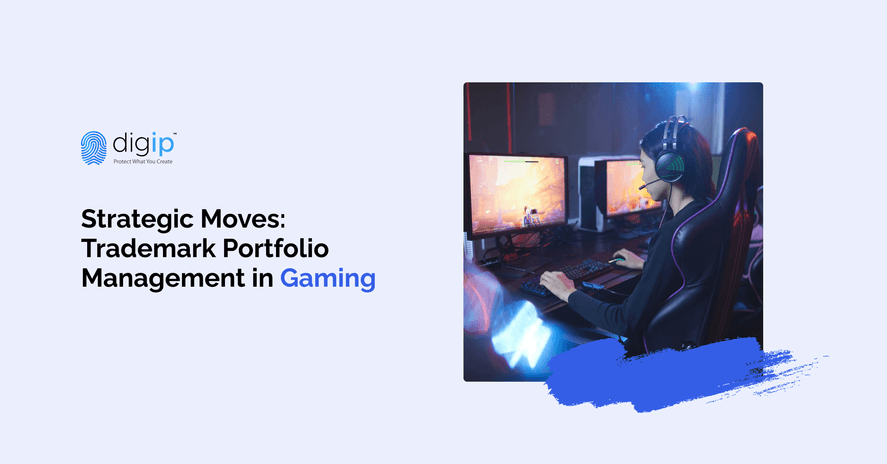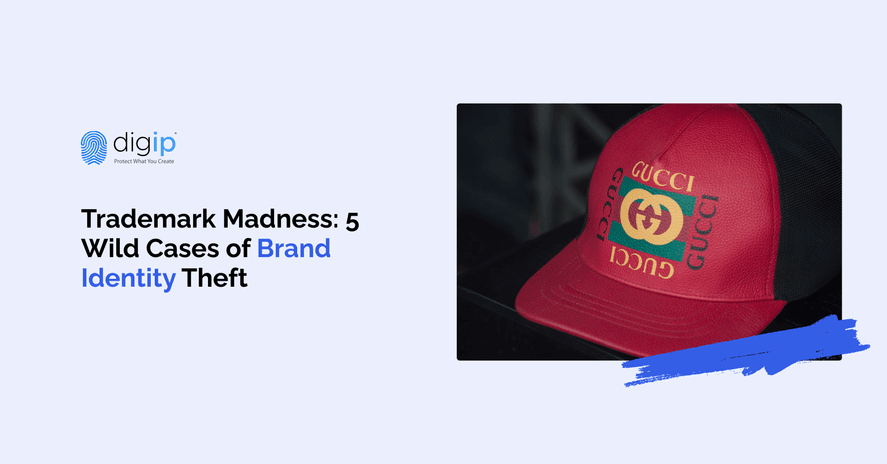
- Trademark
- Domain
Strategic Moves: Trademark Portfolio Management in Gaming
As a leader in the gaming industry, you understand the value of a strong trademark portfolio. Your brands and characters are iconic, recognized across the world by fans and competitors alike. Managing these valuable trademarks requires proactive strategy to maximize their legal protection and brand equity. This article will provide key insights on building a robust trademark portfolio, from selecting distinctive marks to monitoring infringement risks. We will explore best practices in trademark management, including guidelines on clearance searching, registration, and enforcement. With strategic investment in your IP rights, you can defend your brands, prevent dilution, and expand thoughtfully into new products and markets. Let us delve into the world of strategic moves in trademark portfolio management for the gaming industry.
Introduction
The gaming industry is inherently dynamic, with new titles, technology, and consumer interests emerging constantly. To succeed in such a fast-paced environment, gaming companies must actively manage their trademark portfolios to match the evolving landscape. Like skillfully manoeuvring game pieces on a board, companies need to plan strategic "moves" to strengthen and leverage their IP.
Staying Ahead of Trends
New genres, devices, and monetization models are constantly reshaping the industry. Companies should evaluate their marks to ensure maximum relevance and longevity as trends shift. They may need to file new applications for emerging product categories or abandon marks that no longer fit their business. Regular audits of the competitive landscape also help detect opportunities to claim new marks that match anticipated trends.
Maximizing Synergies
A well-managed portfolio contains marks that work together to reinforce brand identity and value. For example, a family of marks related to a hit franchise helps to cement its place in popular culture and open new revenue streams. Companies should consider how new applications might complement existing marks to build a cohesive and impactful portfolio.
With deliberate management of their trademark portfolios, gaming companies can gain a competitive advantage and achieve greater success and longevity. The strategic moves they make today will shape their ability to thrive in the marketplaces of tomorrow.
Excerpt Highlight from the White Paper
Regular reviews of the trademark portfolio are essential to ensure comprehensive coverage of all aspects of the business,' says the white paper. It's like checking your game's mini-map; you need to see the whole landscape to plan your next strategic move. We'll explore how games like 'Final Fantasy' have broadened their trademark strategy to encompass more than just a title.
The Mini-Map of Your Brand
A comprehensive trademark portfolio provides an aerial view of your brand’s intellectual property assets. Like a mini-map in a strategic game that displays the locations of resources and opponents, your portfolio maps the trademarks that safeguard your brand identity, products, and services.
Product Marks
Product marks protect the names and designs of your offerings. Registering trademarks for each product line and model in your range establishes exclusive rights and prevents competitors from using confusingly similar marks. Product marks are the landmarks on your mini-map, pinpointing where you have secured territory.
Brand Marks
Your brand marks, including business names, logos, and slogans, represent your company as a whole. Registering these marks protects your corporate identity and deters others from appropriating elements of your brand. On the mini-map, brand marks denote your headquarters and most valuable strongholds.
Monitoring your portfolio regularly allows you to identify any unprotected areas of your brand territory. Conducting searches for potentially conflicting marks, both registered and used in commerce, helps avoid disputes over territory. Expanding into new product lines or services also requires securing additional trademarks to extend your control. Effectively managing your portfolio results in a comprehensive mini-map that provides strategic advantages over competitors.
Leveling Up Trademark Strategy
To maximize the value of game franchises, developers must implement comprehensive trademark protection strategies early on. Registering trademarks broadly and early secures not just the game title but also characters, logos, and in-game assets.
Broad Registration
Successful franchises like Final Fantasy show how broadly registering trademarks pays off. Square Enix registered “Final Fantasy” for games, then expanded to areas like toys, collectibles, clothing, and media. This wide net of protection allows monetizing the franchise through diverse products and partnerships.
Protecting In-Game Assets
Developers should also consider registering in-game sounds, catchphrases, and other creative elements as trademarks. For example, the “Energy Sword” weapon sound effect from Halo is iconic. Registering that trademark reinforces brand identity and prevents competitors from appropriating unique in-game assets.
International Registration
For franchises with global audiences, international trademark registration is key. While registration procedures vary, the Madrid Protocol system allows filing a single application to register a trademark in over 100 countries. International registration helps prevent infringement and paves the way for overseas licensing deals.
With strategic management, a robust trademark portfolio becomes a valuable corporate asset. Broad and early registration, combined with international reach, gives developers more control and flexibility to fully capitalize on their creative works. Failing to implement such strategies risks losing out on revenue and brand integrity that could have been secured through comprehensive trademark protection.
The Boss Fights of Infringement
Trademark owners must remain vigilant to enforce their rights and prevent unauthorized use of their intellectual property. Identifying potential infringements requires actively monitoring the marketplace and internet. The challenges of enforcing a broad trademark strategy are akin to facing various “bosses” in different game levels.
Cease and Desist
When potential infringements are detected, the first step is issuing a cease and desist letter to the infringing party demanding that the unauthorized use stop immediately. Failure to comply can lead to further legal action. These initial encounters are relatively straightforward but set the stage for more difficult battles ahead.
Litigation
Parties unwilling to cooperate may force the trademark owner into legal proceedings to protect their rights. Litigation is costly and time-consuming but necessary to curb damaging infringement. Settlements and judgments in the trademark owner’s favor establish the strength and enforceability of their IP rights. While litigation always carries some risk, proactively building a robust trademark portfolio and evidence of continuous use significantly improves the odds of a favorable outcome.
Counterfeits
For companies with a strong brand and popular products, counterfeits pose one of the biggest threats. Combating counterfeits requires aggressive action across borders, and cooperation with authorities and intermediaries. Despite best efforts, counterfeits persist, damaging brand equity and siphoning revenue. With vigilance and a commitment to enforcement, companies can mitigate the impact of counterfeits, but it is a never-ending battle that continues to plague brands with widespread mainstream popularity.
The boss fights of infringement are formidable but surmountable foes for companies with a strategic approach to trademark portfolio management and a willingness to dedicate resources to IP protection. With each victory, the trademark fortress is reinforced, and brand integrity preserved. But as with any game, there is always another level and another boss to face. Constant defense is the key to long-term success.
Power-Ups Through Regular Reviews
Regular reviews of your trademark portfolio are essential to keeping pace with business changes. As new games, expansions, and merchandise are released, your legal protections must adapt accordingly.
Ongoing Monitoring
Continuously monitor your portfolio to identify new opportunities for registration and ensure existing marks remain properly protected. Track upcoming release schedules and evaluate how new products or services may impact your portfolio. Reviewing on an ongoing basis avoids the need for a time-consuming overhaul and allows you to make incremental changes.
Renewing Registrations
Trademark registrations must be renewed every 10 years to remain in force. Review registrations well in advance of their renewal deadline to determine which should be maintained and which have outlived their usefulness. Failure to renew valuable marks can weaken your rights. Renewing strategically prunes deadwood from your portfolio while preserving essential protections.
Adapting to Market Changes
Regular reviews also help ensure your portfolio evolves with the market. As new competitors enter the space or consumer tastes change, evaluate whether your existing marks continue to distinguish your goods and services. You may need to pursue new applications for emerging brands or products. An up-to-date portfolio, like the latest game release, gives you a competitive edge.
Through consistent monitoring, strategic renewals, and adapting to change, regular reviews provide “power-ups” to keep your trademark portfolio optimized and aligned with your business reality. Much like gameplay, protecting intellectual property requires ongoing refinement and skill. A robust review process helps achieve the high score of a portfolio as dynamic as the industry itself.
Co-op Mode: Domain Name Management
Managing your company’s domain name portfolio is crucial in today’s digital gaming landscape. As more consumers discover your games online, securing aligned web assets strengthens your brand and deters copycats.
Defensive Registration
Registering domains similar to your trademarks prevents others from exploiting them. For example, if your game is called “Galactic Quest,” register “galacticquestgame.com” and “playgalacticquest.com.” Monitor the web for newly registered, confusingly similar domains and take action as needed.
Consistent Branding
Align your domain name strategy with your trademark portfolio. If your game logo incorporates “Quest” in a stylized font, use “Quest” in your primary domain. Subdomains, microsites and social media profiles should also be consistently branded to reinforce your identity across platforms.
Optimized Presence
Choose short, memorable domain names that are easy to market and promote. For search engine optimization, include relevant keywords in your domain name, page titles, content, and metadata. An optimized web presence, anchored by a strong domain name portfolio, helps boost your search rankings and visibility.
Managing domain names may seem trivial, but in today’s online world it is a strategic move that cannot be ignored. Aligning and protecting your web assets establishes your brand, deters infringement, and ensures your fans can always find the official source for your games. With some defensive planning, you'll gain the top score and beat the final boss of cybersquatting.
The Endgame: A Future-Proof Portfolio
Developing a strategic approach to trademark portfolio management is essential for long-term success. As with any good endgame strategy, your trademark management plan should be adaptable, proactive, and poised to handle future challenges.
Regularly review your trademark portfolio to ensure the continued relevance and strength of your marks. Evaluate opportunities to file new applications for core brands, product names, slogans, or logos as your business evolves. Seek to expand protection into additional trademark classes or jurisdictions as you enter new markets. Pursue trademark renewals and affidavits of use well in advance of deadlines to avoid loss of rights.
Monitor third-party trademark applications and registrations to catch potentially infringing marks early. Be prepared to oppose applications or petition to cancel registrations for marks that could be confused with your own. Track trademarks from competitors to gain valuable insight into their branding and growth strategies.
Stay up-to-date with changes in trademark law by consulting with legal counsel. New legislation, court decisions, or procedural changes may impact your portfolio management strategy. Adapt your approach accordingly to take advantage of any opportunities or address additional responsibilities.
With constant vigilance and forward-thinking strategy, you can build a trademark portfolio suited to withstand challenges from competitors, survive changes in the legal landscape, and support business growth for years to come. The endgame is a future-proof portfolio, shielded from threats and positioned to capture new opportunities on the horizon.
Conclusion
You now have a better understanding of the importance of proactive trademark portfolio management for gaming companies. By regularly reviewing your trademark registrations and applications, watching for infringement, and taking steps to strengthen your portfolio, you can help ensure your valuable brands and games are protected. With strategic planning and ongoing vigilance, you can build a robust trademark portfolio that evolves along with your company. Protect your brands, enable company growth, and position your business for long-term success through smart trademark moves.
If you are interested about how Digip can help your company to better manage and optimize your trademark portfolio you could also book an initial consultation here
- Trademark
- Domain




